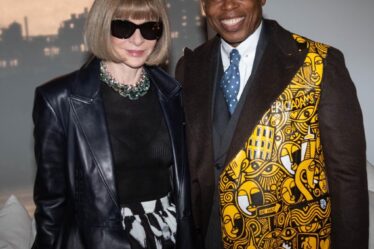
Dear BoF Community,
In 2007, BoF began as a blog in the same year that the iPhone launched and just as social media was about to explode into the global consciousness. BoF took part in a wave of innovation that irrevocably transformed the way we connect, communicate and engage with each other â and with the brands that we love.
Now, we are on the cusp of another wave of innovation. In the last year, the interest in AI has dramatically grown, spurred by the rise of ChatGPT, Dall-E, Midjourney and other generative AI tools.
But there is so much more to AI than this. We still do not know how it will evolve, and how it will change the way we live and work. All we know is that the underlying technology has reached an exciting inflection point in terms of application and adoption.
Today, The Business of Fashion is excited to share our first experiment in using AI to solve a set of industry problems that we have been thinking about a lot. As the industry continues its inexorable shift from analogue to digital marketing channels, new marketing challenges â and opportunities â are emerging for fashion brands:
- Marketing spend is increasing, but measurement tools are still insufficient: Fashion brands are spending more on digital marketing, but the tools they are using are unable to assess the quality of the ensuing social conversation.
- Brands are communicating across a growing number of channels: The number of channels that brands are using to reach customers around the world continues to grow, making it harder to measure impact and success.
- Customers have a higher share of voice in determining brand narratives: Brands once unilaterally controlled their brand narratives. Today, brands engage in a multi-directional dialogue that is often driven by customers themselves across a variety of social media platforms.
This means there is also more data than ever to understand what customers are saying and thinking about fashion brands. However, most of the data available in the market is still focused on the volume of the conversation â reach, impressions, engagements â and less on the quality of that conversation.
BoF Insights and Quilt.AI co-created The BoF Brand Magic Index as a novel, quantifiable and trackable metric to evaluate a brandâs marketing efforts by measuring the distance between brands and their customers. The Index is powered by proprietary AI models from Quilt.AI that are trained on hundreds of millions of cultural expressions to evaluate content shared by brands and their customers on social media.
We first assess the ideals and values that a brand conveys in its own content, leveraging 12 archetypes developed by Carl Jung, and then analyse if customers express the same archetypes when they share content about a brand.
Ultimately, Brand Magic is an AI tool that measures whether customers see a brand in the same way that the brand sees itself. We believe Brand Magic is one forward-looking performance metric into how a brand will perform. Our thesis is that most aligned brands will outperform over the long-term.
For our first iteration of this analysis, we have quantified a Brand Magic score for 50 global luxury and fashion brands. We analysed over 70,000 posts from around the world across Instagram, TikTok, YouTube and Weibo between May 1 to July 31, 2023. Brands that score highly in our Index are in lockstep with their customers, while brands at the opposite end of the spectrum are likely in transition.
The most aligned brands are in lockstep with their customers:
- Miu Miu (Score = 95) Sometimes known as Pradaâs little sister, the directional Italian brand has experienced a growth spurt after Miuccia Prada injected new creativity into the brand, exuding individuality and confidence that has translated well on social media. Sales were up 50 percent year over year in H2 2023.
- Giorgio Armani (Score = 92) The Armani empire remains under the steady creative leadership of its founder, with a brand image that has remained understandable to his customers. Although Armani is not a âhotâ brand, it is unfailingly consistent in its brand expression.
- Boss (Score = 92) The brand once known for its tailoring is undergoing a significant turnaround led by CEO Daniel Grieder. He has clarified the positioning of its two brands, Boss and Hugo while leaning into a successful influencer-led strategy to drive awareness and push into more casual styles. The company raised its 2023 guidance for the second time in August.
The least aligned brands are in transition:
- Lanvin (Score = 62) The venerable couture maison is still searching for a new identity post Alber Elbaz. Bruno Sialelli, who replaced Elbaz, left last year. The search is on for a new creative director.
- Michael Kors (Score = 62) The âjet setâ brand known for its charismatic and energetic founder has become over-reliant on discounting, which has diluted the brandâs appeal.
- Gucci (Score = 58) Performance at the historic Italian house has flatlined following the exit of Alessandro Michele, who oversaw an unprecedented growth spurt. Customers are awaiting a new creative vision from Sabato de Sarno, who debuts his first collection at Milan Fashion Week in September 2023.
- Diesel (Score = 56) The provocative denim brand has created new buzz with industry insiders who are taken with Glenn Martensâ designs and ideas, but our data suggests customers have not caught up with his new vision, reinforcing the fact that evolution takes time.
If you find these insights to be thought-provoking, BoF Insights and Quilt.AI can deliver detailed and proprietary analysis for your brand based on thousands of data points on social media, broken down by geography, demography and social media platform. If you are interested, please contact us at [email protected].
For in-depth analysis across the 50 brands in the index, as well as more detail on the methodology, download the complete report on The BoF Brand Magic Index.
Imran and The BoF Insights Team



